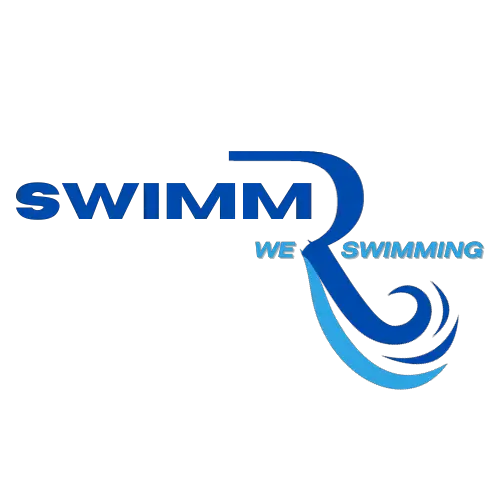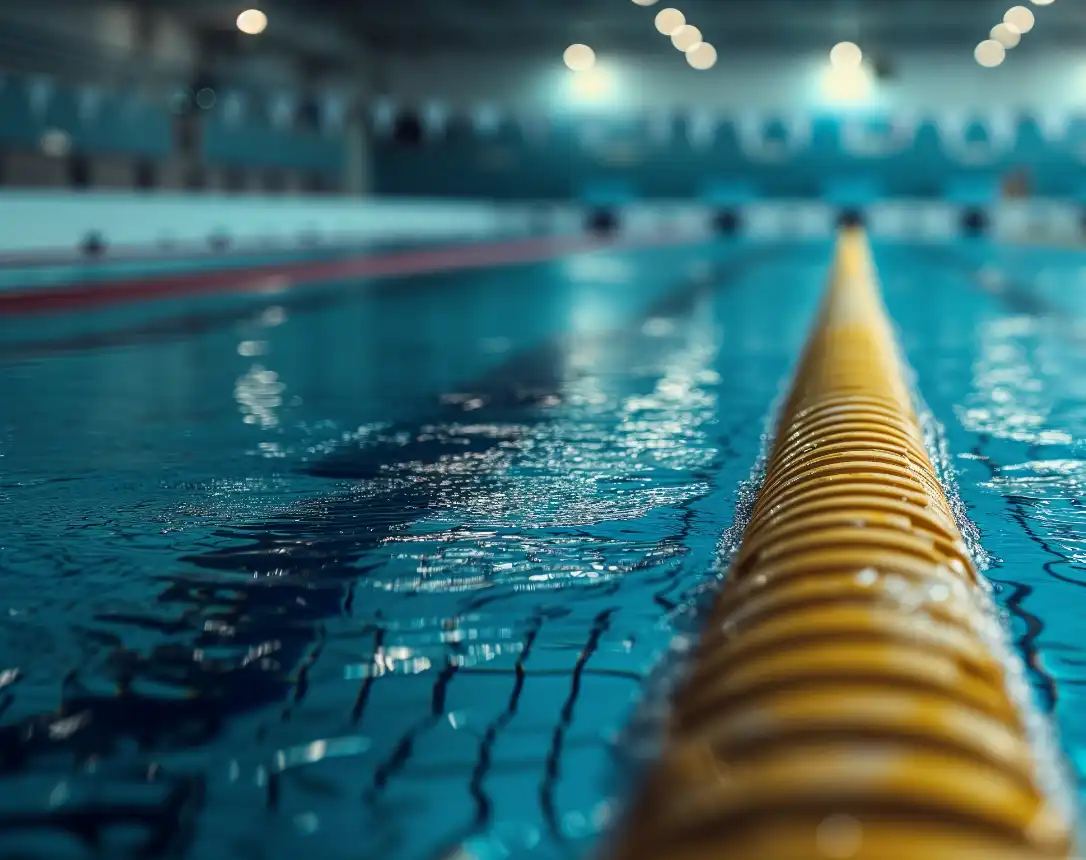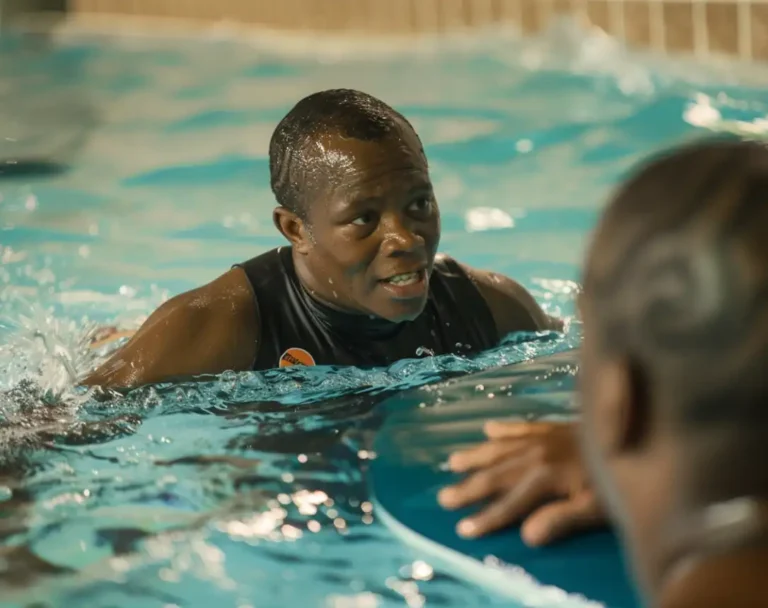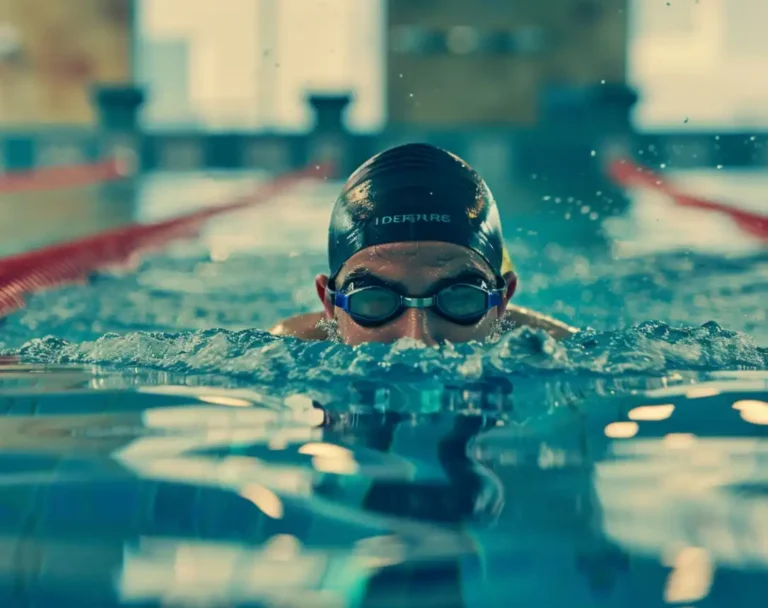Learning how to swim laps is a milestone in your swimming journey, offering a meditative, yet powerful way to improve fitness. This guide demystifies the process, from perfecting your stroke to managing breath control, ensuring you get the most out of every lap.
Whether you’re swimming for health, endurance, or the sheer joy of it, we’ll help you navigate the nuances of lap swimming to maximize your pool time. Embrace the rhythm of the water and let each lap bring you closer to your goals.
Getting Started with Lap Swimming
Before we dive into the nitty-gritty of lap swimming, it’s crucial for me to share the exhilaration that comes with slicing through the water, lap after lap. Whether you’re a beginner eager to learn or you’re just looking to refine your skills, understanding the basics and gearing up properly will make a world of difference in your swimming routine.
Understanding the Basics of Lap Swimming
Lap swimming, for me, is the ultimate blend of rhythm, coordination, and endurance. To kickstart your journey, setting achievable goals is paramount. If you’re just beginning, focusing on swimming consistently over distances rather than speed helps build stamina. Familiarize yourself with the different swim strokes like freestyle, backstroke, breaststroke, and butterfly. Mastering at least one will make those laps feel less like a chore and more like my kind of fun-filled joy ride.
Choosing the Right Gear for Lap Swimming
In lap swimming, the right gear is almost as vital as the stroke you use. A comfortable swimsuit is essential for those long sessions in the pool. I always look for a swimsuit that’s snug yet flexible to avoid drag without restricting movement. Don’t forget your goggles; they are your eyes underwater, literally a window to your swimming world. They should provide clear vision and a watertight seal. Another key item is a swim cap, which helps in reducing resistance and keeps my hair relatively dry. Lastly, if you’re serious about making strides in your lap swimming, consider joining a club where you can swim with others, share experiences, and get tips from more seasoned swimmers. With the proper gear by your side, every lap feels like a personal victory.
Techniques for Efficient Swimming
I’m thrilled to share some swift and effective techniques that will elevate your swimming strokes to new heights. From perfecting the freestyle to mastering the dolphin kick, these methods will ensure every lap you take is smoother, faster, and more enjoyable. Let’s dive into each stroke one by one and dissect the mechanics behind their effectiveness.
Mastering the Freestyle Stroke
The freestyle is all about economizing your motion. To reduce drag, I make sure to keep my body as flat as possible, aligning it with the surface of the water. It’s essential to rotate my body from side to side with each stroke, allowing for longer reaches. My advice:
- Steady Head Position: Keep my head down and eyes looking at the bottom of the pool.
- Streamlined Kick: Continuous, flutter kicks from the hips, minimal knee bend.
Improving Your Breaststroke Technique
Breaststroke requires a symphony of synchronized movements. I focus on the timing of my kicks and arm strokes to ensure they complement each other:
- High Elbow Catch: Sweep out with my arms, keeping elbows high and palms facing outward before pushing the water back.
- Whip Kick Efficieny: Bring my heels toward my buttocks, turn my feet out, and snap them back together to propel forward.
The Butterfly Stroke
For the butterfly, it’s the undulation of my body and the two-beat dolphin kick that create the necessary propulsion. The key elements I enhance are:
- Rhythmic Breathing: Time my breaths with the natural rise and fall of my body.
- Arm Synchronization: Ensure my arms move in a mirror-image fashion, entering and exiting the water at the same time.
Backstroke Basics
When I swim backstroke, I maintain a balance between reach and rotation. My arm movements are alternate and continuous, like windmill rotations, involving these focus areas:
- Rotational Movement: Keep my body rotating along the long axis for each arm stroke.
- Leg Action: Execute flutter kicks with straight legs and pointed toes.
Perfecting the Dolphin Kick
The dolphin kick is all about core strength and flexibility. I work on keeping my kick fluid and wave-like, allowing the motion to travel down my body:
- Rapid Kick Motion: Initiate the kick from my core and hips, minimizing knee movement.
- Harmonious Flow: The entire body should undulate in a cohesive waveform from head to toe.
By honing these techniques and engraining them in my practice, each swimming session becomes an opportunity for improvement. My strokes are not just motions, they’re crafted skills that send me gliding through the water as though I’m part of it.
Swim Workouts and Training
Harnessing the power of a well-structured swim workout plan invigorates both mind and body. I understand the thrill of slicing through the water, the rush from boosting endurance, and the satisfaction of a routine fine-tuned for resilience.
Creating a Swim Workout Plan
Crafting my swim workout plan, I focus on setting realistic goals that match my skill level and desired exercise outcome. I intersperse a variety of strokes to engage different muscle groups, ensuring a comprehensive approach to fitness. A well-rounded plan for me typically includes a warm-up, a pre-set, main set, and cool-down. My main set usually contains the core work of my swim sessions, where intensity and distance are key factors.
- Warm-up: 200-400 meters, easy pace
- Pre-set: Kicking or drill work to refine technique
- Main set: Focused on building speed and endurance, with varying intensities
- Cool-down: 200 meters, easy pace to help muscles recover
Incorporating Interval Training
I ramp up my routine with interval training to enhance my cardio fitness and speed. By switching between high-intensity sprints and lower-intensity swimming, I get a rigorous workout that maximizes calorie burn and builds muscular endurance. Rest intervals are crucial; I keep them consistent to track my progress over time.
Example Interval Set:
- 8 x 50 meters at high intensity, with 30 seconds rest between each
- 4 x 100 meters at moderate intensity, with 45 seconds rest between each
Long Course vs. Short Course Training
I tailor my swim workouts to suit the type of pool available. Long course pools (50 meters in length) are fantastic for building endurance, with fewer turns which allow me to focus on maintaining a steady stroke for longer distances. Contrastingly, training in a short course pool (25 meters) has me working on my turns and pushing off the wall more often, which can enhance my speed and agility. It’s a diverse practice, one that tunes the finesse of my technique and bolsters my swimming prowess.
- Long Course: Ideal for steady-state endurance work
- Short Course: Beneficial for refining starts, turns, and speed
Fitness and Health Benefits
I’ve discovered that swimming laps isn’t just a refreshing way to cool off; it’s a powerful boost to my fitness and health goals. Let me dive into the specifics that make swimming such an amazing workout.
Cardiovascular Health and Swimming
Swimming laps consistently plays an essential role in enhancing my cardiovascular health. With every stroke and kick, I’m helping my heart become stronger and more efficient. It’s a fact that regular swimming reduces the risk of heart disease by improving blood pressure and cholesterol levels.
- Frequency: Aim for 3-5 sessions per week.
- Session Length: Gradually increase to 30 minutes or more.
Weight Loss and Caloric Burn
As I glide through the water, swimming becomes a dynamic activity that helps me burn calories and shed extra pounds. It’s an excellent exercise for weight loss because the resistance of the water means I burn more calories than I would doing the equivalent time on land.
- 30 minutes of moderate swimming: Approximately 250 calories burned
- 30 minutes of vigorous swimming: Up to 400 calories burned
Full-Body Workout and Muscular Strength
Swimming laps is my go-to for a full-body workout. Nearly all muscles are activated during a good swim session, building muscular strength and endurance. From my core to my legs, I feel stronger and more toned with every session.
- Muscles Engaged: Arms, legs, glutes, back, and core.
- Strength Gains: Notable improvement in muscle strength with consistent training.
Swimming is not just another way to stay fit; it’s a multifaceted exercise that has transformed my health and can do the same for anyone looking to lead a healthier lifestyle.
Safety and Injury Prevention
I’ve discovered the key to improving my swims without the setback of injuries is a trifecta of safety precautions. It’s amazing how a well-structured warm-up, committed stretching routine, and savvy pain management can transform your laps from risky to remarkable.
Proper Warm-Up Techniques
Before I dive into the pool, I begin with 5-10 minutes of light aerobic exercise to get my heart rate up. This could be as simple as jogging in place or a brisk walk. I always make sure to include dynamic movements that mimic swimming motions, activating my shoulder and hip joints, which are crucial for strokes.
Stretching and Flexibility
I never underestimate the power of stretching. Focused stretches that enhance my flexibility allow me to prevent joint pain and increase my range of motion. Here’s a quick routine I stick to:
- Shoulder Stretch: 30 seconds each arm
- Trunk Twist: 20 seconds each side
- Leg Swings: 10 swings per leg
This regimen drastically improves my muscle elasticity which is essential for those long, fluid strokes.
Managing Pain and Injury
When I experience pain, I listen to my body. Rest is paramount. For minor aches, I use the R.I.C.E method – it stands for Rest, Ice, Compression, and Elevation. Pain is a sign, and addressing it promptly can prevent most swimming-related injuries. If the pain persists, I consult with a healthcare professional specializing in sports injuries to get back to my laps as soon as safely possible.
Progress Tracking and Goal Setting
I thrive on setting targets and smashing them—it’s the zest that keeps my strokes strong. Early on, I realized that a swimmer’s journey must be punctuated with milestones, and tracking my progress became my roadmap to success. Let’s dive into how setting goals and monitoring achievements can fuel our swim sessions with purpose and gusto.
Setting Achievable Swimming Goals
The first splash for any swimmer is to define what success looks like. What are my aims? It could be swimming a certain distance within a time frame, enhancing my pace, or hitting the pool a set number of times per week. Achievability is key. Start with manageable goals that match my current ability, and then stretch them as improvements are noted. Track each milestone, and let each small victory be the wave that propels me to the next challenge.
- Week 1 Goal: Swim 500 meters without stopping
- Week 4 Goal: Swim 500 meters, decrease time by 15 seconds
Keeping Track of Your Swimming Progress
Measuring progress is addictive when the metrics are visible. I log every lap, every session, and every improvement. Whether it’s pen and paper or a digital app, seeing numbers trend upwards sparks an unmatched exhilaration. Did I beat my previous speed? Am I more efficient in my technique? Answering these questions quantitatively gives my training tangible goals to aspire to and surpass.
| Week | Distance (meters) | Time | Pace (min per 100m) |
|---|---|---|---|
| Week 1 | 1000 | 25:00 min | 2:30 |
| Week 6 | 1000 | 23:45 min | 2:22 |
My log shows clearly how far I’ve come, and there’s no better motivation than that.
Advanced Swimming Techniques
I’ve perfected my strokes and I’m ready to share secret tips that will elevate your game! If you’re looking to advance in the pool, these techniques are your fast track to success.
Circle Swimming and Pool Etiquette
When you’re part of a swim team, circle swimming is the status quo. I always stay on the right side of the lane to allow faster swimmers to pass smoothly on the left. It’s polite to give a gentle tap on the feet to signal that you’re overtaking. It’s easy team etiquette but incredibly important for a smooth routine.
How to Swim Laps – Pool Etiquette Rules
- Choose a lane matching your speed by observing signs or swimmers’ speeds.
- Swim alone in the middle of the lane; with two, split the lane.
- With three or more, circle swim counterclockwise and tap to pass.
- Enter the lane slowly, indicating your presence to others.
- Avoid full-lane strokes like Butterfly in shared lanes.
- Do not dive in, as it’s dangerous and disruptive.
- Diving blocks are for swim team use only, requiring permission.
- Allow faster swimmers to pass before pushing off the wall.
- Chat or rest on the lane sides, not in active swimming areas.
- Do not request lifeguard stroke critiques; they focus on safety.
Building Up Swimming Endurance
To build endurance, I stick to a consistent swim routine that gradually increases in intensity. Here’s a quick list of how I ramp it up:
- Week 1: Swim 500 meters nonstop.
- Week 2: Push for 700 meters.
- Week 3: Aim for 1,000 meters.
It’s all about the incremental challenges!
Speed Work and Sprinting Techniques
For speed, I love short bursts called sprints. Mixing them into workouts is a game changer. I start with a warm-up, then:
- Sprint for 50 meters.
- Rest for 15 seconds.
- Repeat.
By aligning my body and using powerful kicks, I can feel the pace picking up. Remember, technique fuels my speed, so I never compromise form for the sake of sprinting.
Swimming Accessories and Equipment
As I dive into the world of swimming, I can’t help but get thrilled about the impact that the right accessories and equipment have on my swim workouts. Selecting the appropriate gear not only bolsters my technique but also adds an element of fun to my laps!
Essential Swimming Gear
The foundation of my swimming routine hinges on a few key items. Without these, I’d literally be out of my depth:
- Goggles: Essential for clear vision underwater, goggles protect my eyes from chlorine and help me stay on course.
- Swim Cap: This nifty piece of equipment keeps my hair out of my face and reduces drag, making my swim sleek and efficient.
The Role of Swim Paddles and Pull Buoys
Swim paddles and pull buoys are my go-tos for honing my upper body strength and technique.
Swim Paddles: These flat pieces enhance resistance as I pull through the water, increasing my arm and shoulder strength.
Pull Buoys: Tucked between my thighs, a pull buoy boosts my buoyancy, allowing me to focus on my upper body without kicking. The result? Improved stroke and arm power.
Mental and Psychological Aspects of Swimming
Ever since I embraced swimming, I’ve discovered an incredible synergy between mind and body. There’s something about the rhythmic strokes and the silence beneath the water that creates a profound mental space. It’s not just about physical fitness; it’s a holistic experience where the psychological elements play a vital role.
The Meditative Aspect of Swimming
As I slice through the water, my mind enters a meditative state. This is not just a figurative expression; it’s a tangible feeling. Every stroke becomes akin to a mindful breath, fostering a deep sense of present-moment awareness. Surrounded by water, external distractions are muffled, and thinking patterns that often clutter my mind start to clear. It regularly becomes a time for problem-solving and reflection, in which ideas flow as smoothly as my movements.
Psychological Benefits of Regular Swimming
Science backs the changes I feel; studies have shown a link between regular swimming and enhanced mental health. The act of swimming has been correlated with reductions in both anxiety and depression, making it a powerful psychological tool. By establishing a routine around this activity, I’ve noticed a consistent uplift in my mood and overall well-being. Furthermore, the release of endorphins while swimming contributes to a positive mindset, providing a natural boost to my mental state.
Incorporation with Other Fitness Regimens
I’m always looking for ways to enhance my physical fitness, and swimming has been a game-changer for me, especially when integrated with other exercises. It’s a symphony of resistance and balance that can rejuvenate my joints like no other workout. Let’s dive into how swimming can complement your overall regimen.
Swimming for Cross-Training
Swimming is the ace up my sleeve when it comes to cross-training. The beauty of it? The water provides a natural resistance that challenges my muscles in a way that land exercises just can’t match. But it’s not all about building strength; the real magic lies in how swimming boosts endurance and stamina. This table breaks down my typical cross-training schedule:
| Day | Cross-Training Activity | Swimming Focus |
|---|---|---|
| Mon | Cycling | Light swim for recovery |
| Wed | Running | Sprint intervals in the pool |
| Fri | Strength Training | Endurance swim (long distances) |
By balancing high-impact activities like running with the low-impact nature of swimming, I’m protecting my joints while pushing my limits.
Balancing Swimming with Other Exercises
Striking the right balance in your fitness routine is key, and for me, swimming is the linchpin. I’m careful to space my swim days between more intense workouts, giving my body a chance to recover. Here’s a snapshot of how I keep my routine aligned for maximum benefit:
- Monday: Weightlifting – Heavy lifting with a focus on legs.
- Tuesday: Swimming – Gentle laps catered towards joint recovery.
- Wednesday to Friday Alternate: A rotation of high-intensity interval training (HIIT) and swimming.
- Weekend: Rest or light yoga to maintain flexibility.
I’ve found that swimming after a heavy leg day helps to alleviate the muscle soreness much quicker, and the consistent switch between water and land exercises keeps my workouts exciting and effective. Remember, the goal is to work in harmony with your body to achieve peak physical fitness, and swimming laps can be your most powerful ally.
Community and Support
Taking my swimming to the next level, I quickly discovered the power of community and support. It’s about connecting with fellow enthusiasts and experts who propel your skills forward and cheer on your improvement.
Joining a Swim Club or Team
I was ecstatic to join my local swim club! It opened a new world for me—one where team spirit thrives and every lap is a shared journey. Here’s what you get with a swim club:
- Camaraderie: Every swimmer shares a common goal—betterment.
- Scheduled Practices: Regular sessions solidify commitment.
- Swim Meets: These events foster healthy competition and measurable improvement.
- Feedback Loop: Being part of a team means constant support and advice.
Learning from a Swimming Trainer or Coach
The one-on-one attention from a swimming trainer revolutionized my approach to the sport. Their expertise guided my technique refinement and boosted my confidence. They offer:
- Personalized Plans: A coach tailors workouts to my capacity and goals.
- Technique Analysis: They correct my form to increase efficiency.
- Motivation: Their belief in me motivates me to push my limits.
- Swimming Program Integration: They ensure my training complements any swim club activities, reinforcing my development on all fronts.
By engaging with a swim club and a coach, I found a wealth of knowledge and inspiration that made each stroke stronger and every lap faster.
FAQ – Frequently Asked Questions
What’s the best way to start swimming laps?
Begin with shorter distances, focusing on your technique and gradually increasing your stamina.
How can I make lap swimming more effective?
Use intervals, mix strokes, and practice consistent breathing to boost your workout’s efficiency.
Can swimming laps help me lose weight?
Yes, it’s an excellent cardiovascular exercise that burns calories and builds muscle.
Dive into the world of how to swim laps and see where the currents take you. Share your lap swimming tips or questions below or on social media!






